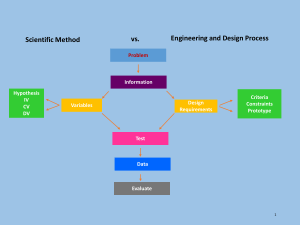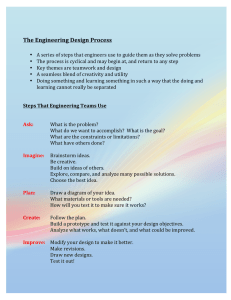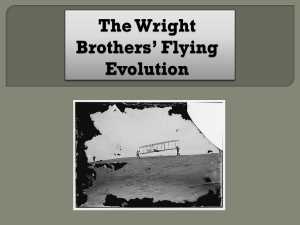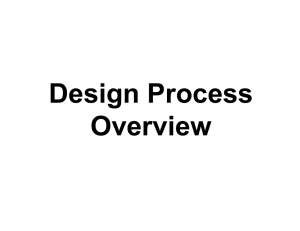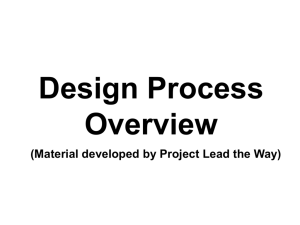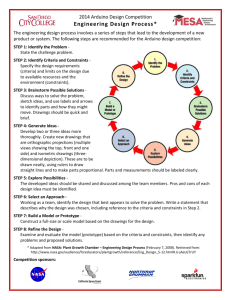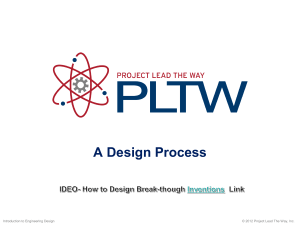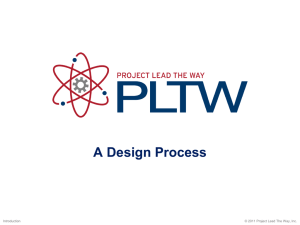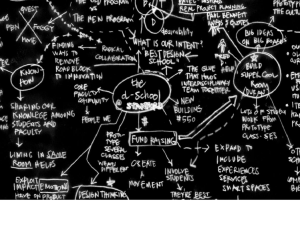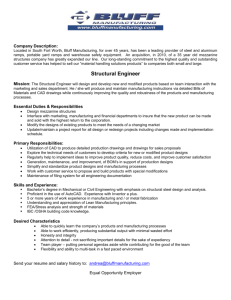The Design Process PowerPoint
advertisement
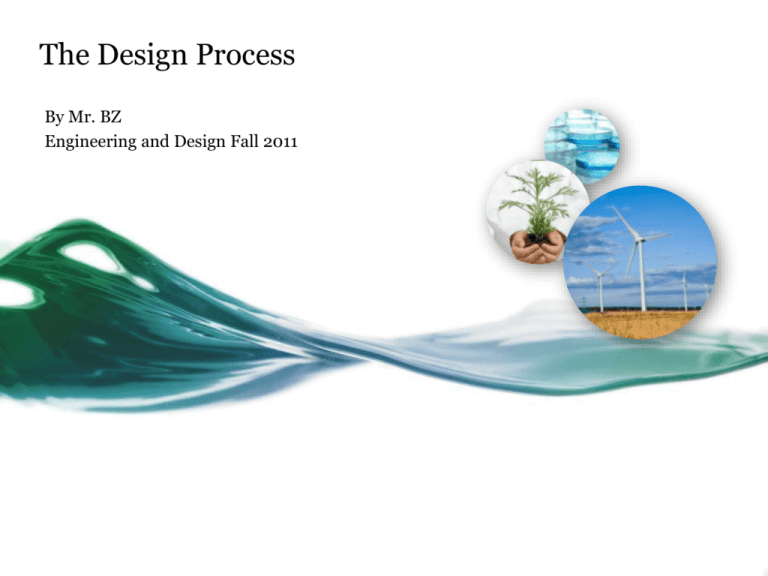
The Design Process By Mr. BZ Engineering and Design Fall 2011 What is Design? • Design is a creative planning process that leads to useful products and systems. • There are no perfect designs • Design requirements are made by criteria and constraints Criteria and Constraints: Criteria: identify the desired elements and features of a product or system and usually relate to their purpose or function. Constraints: such as size and cost, establish the limits on a design. What is the Design Process? • The design process is a purposeful method of planning practical solutions to problems. • The design process is never final; there are always multiple solutions to a problem. • The design process is influenced by requirements called criteria and constraints. 9 Steps to the Design Process 9 Communicate Results 1 Define the Problem 2 8 Brainstorm Improve Design Design Process 7 3 Research Test and Evaluate 4 6 Develop Ideas Model or Prototype 5 Choose Best Idea Step One: Define the Problem Defining the problem is like conducting detective work. You must examine the evidence and form some conclusions. Step Two: Brainstorm Brainstorming involves bringing a group of people together to generate many different ideas. All ideas are considered- None are criticized Step Three: Research Research may require going to the library, using computer databases, writing letters, performing experiments, and asking questions. Step Four: Develop Ideas Develop multiple ideas that will solve the problem and meet the requirements. The alternatives may all be quite diverse. Criteria: How will the solution actually work? What materials should I use? What should the product look like so that people will buy it? Constraints: Will it be completed by the deadline? What size should it be? Step Five: Choose The Best Idea Decide on an idea that best meets the criteria, fits within the constraints, and has the least amount of negative characteristics. • List the strengths and weaknesses of each alternative. • Optimize for better performance/safety • Trade-off, give up one desirable trait for another Step Six: Model or Prototype • Model building is used to gather additional information and test design ideas. Realistic drawings or renderings help you visualize what the solution will look like in real life. Scale models or mock-ups are small, accurate representations of the final product. 3D CAD (computer aided designs) can show objects in action. A prototype is a working model; it looks and functions just like the finished product. Step Seven: Test and Evaluate • Models of design solutions must be tested and important questions must be answered during the evaluation. Is it safe for people and the environment? Is it comfortable? Is it affordable? Is it aesthetically pleasing (does it look good)? Will it last as long as it needs to? Does it meet the criteria and constraints? Does it work? Step Eight: Improve Design • After studying all test data and evaluating design solutions, you may need to make changes. This is the time to improve design before production starts Step Nine: Communicate Results • Share your design ideas with others to prove the design is worthy of manufacturing. • Poster Drawings Charts Prototypes PowerPoint presentation Reports Discussion
